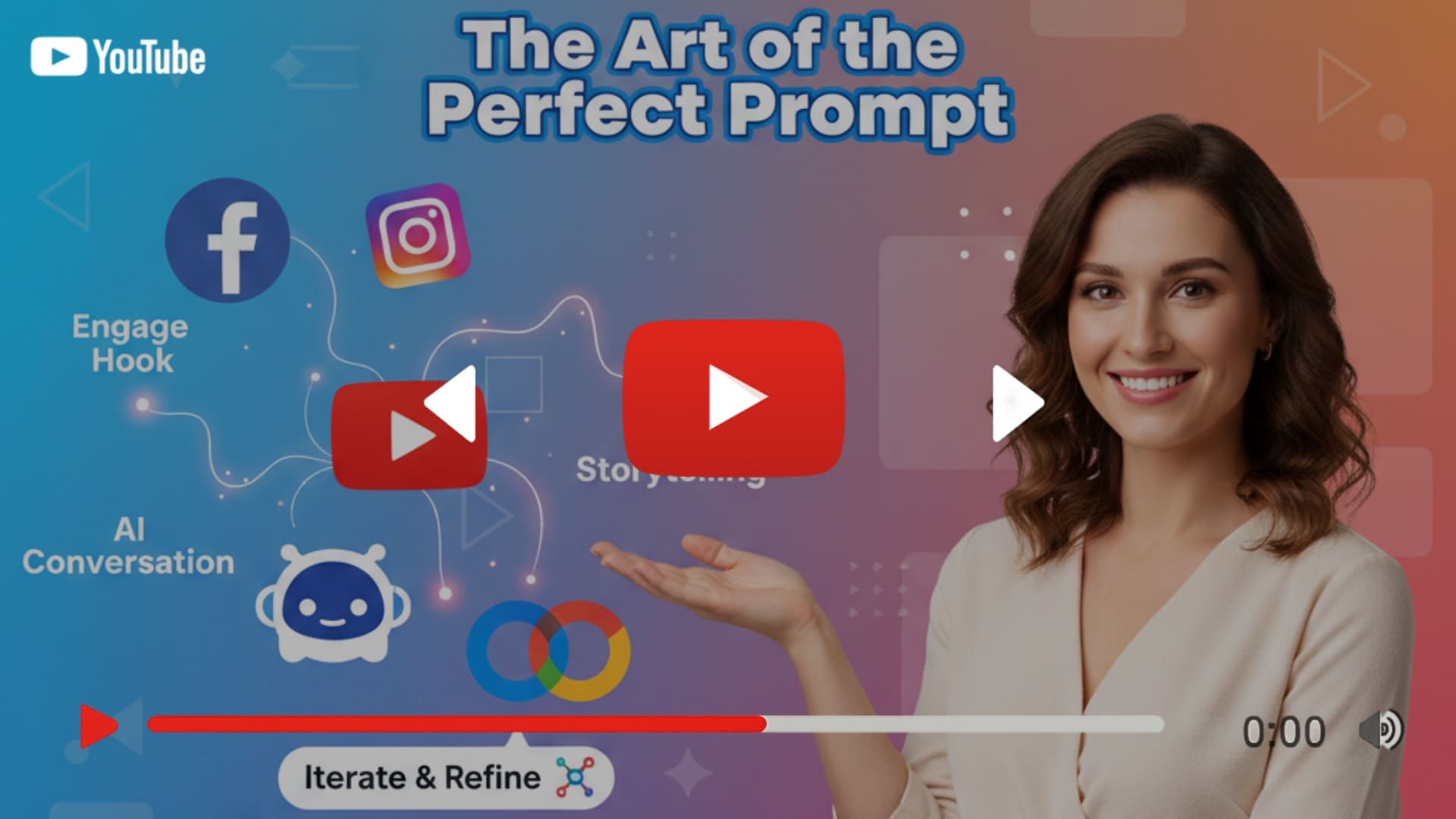Welcome to Prompt Sigma. Many users approach Large Language Models (LLMs) as they would a search engine, inputting a handful of keywords and hoping for the best. However, to truly unlock the nuanced, accurate, and creative potential of these powerful tools, we must move beyond this basic approach. Crafting the perfect prompt is an art and a science—a form of communication that requires clarity, context, and strategic direction. In this article, we will explore the fundamental principles that elevate your prompts from simple queries to masterful instructions.
Why Keywords Aren't Enough
Think of an LLM as an incredibly knowledgeable, but infinitely literal, assistant. If you say "write about dogs," it has no context for your true intent. Are you a veterinarian needing technical information? A child looking for a fun story? A marketer writing ad copy? Simple keywords provide no direction. LLMs are next-word prediction engines; they generate responses based on the statistical likelihood of what should follow your prompt. Generic prompts, therefore, lead to generic, unfocused, and often unhelpful answers. The art of prompting lies in providing the precise context and constraints needed to guide the AI toward your specific, desired output.
Core Principles for Effective Prompting
To move beyond keywords, integrate these core principles into your prompting strategy. This is how you transition from a simple user to a true prompt engineer.
1. Assign a Role or Persona
Begin your prompt by giving the AI a specific role. This is the fastest way to set a baseline for the tone, expertise, and perspective of the response. Instead of just asking a question, frame it with a persona.
- Weak Prompt: "Explain blockchain."
- Strong Prompt: "You are a seasoned economics professor. Explain the concept of blockchain to a first-year undergraduate student, focusing on its implications for financial systems."
2. Provide Rich Context
Context is the 'what' and 'why' of your request. The more relevant information you provide, the less the AI has to guess. Include background details, the purpose of the task, and any specific constraints. Think of it as briefing a team member.
- Weak Prompt: "Write a marketing email for my new product."
- Strong Prompt: "You are a direct-response copywriter. I am launching a new productivity app called 'Momentum' that helps freelancers track their time. Write a 150-word email for my existing mailing list (they are all creative professionals). The goal is to drive clicks to our launch page. Use an enthusiastic but professional tone."
3. Be Explicit and Specific
Vagueness is the enemy of quality AI output. Clearly define the format, length, style, and structure of your desired response. Use action verbs and precise language.
- Weak Prompt: "Summarize the article [text]."
- Strong Prompt: "Summarize the provided article for a busy executive. The output must be a bulleted list of the top 5 key takeaways. Each bullet point should be no more than one sentence long."
4. Iterate and Refine
Your first prompt is almost never your best prompt. See the initial response as a draft. Identify what's missing or incorrect, and then refine your prompt to address those gaps. Add constraints, clarify instructions, or ask the AI to 'think step-by-step' to improve its reasoning.
"A great prompt is not written; it's refined. The dialogue you have with the AI is part of the creative process itself." - Professor KYN Sigma
Putting It All Together: A Case Study
Let's see how these principles combine. Imagine you want to generate creative ideas for a new blog post.
- Initial (Keyword) Prompt: "Blog post ideas about AI."
- Result: A generic list like "The Future of AI," "What is Machine Learning?" etc.
- Advanced (Structured) Prompt: "You are a senior content strategist for a tech blog (like 'Prompt Sigma') that targets AI enthusiasts and developers. Your goal is to generate 5 novel blog post titles that explore the intersection of generative AI and creative writing. The titles should be compelling, slightly provocative, and optimized for SEO. For each title, provide a one-sentence hook to capture the reader's interest."
The second prompt, by using a role, providing context (target audience, topic), and specifying the exact format (5 titles, hook, SEO-friendly), will produce vastly more useful and targeted results. Mastering these techniques is the first true step toward becoming a proficient prompt engineer.
Visual Demonstration
Watch: PromptSigma featured Youtube Video
